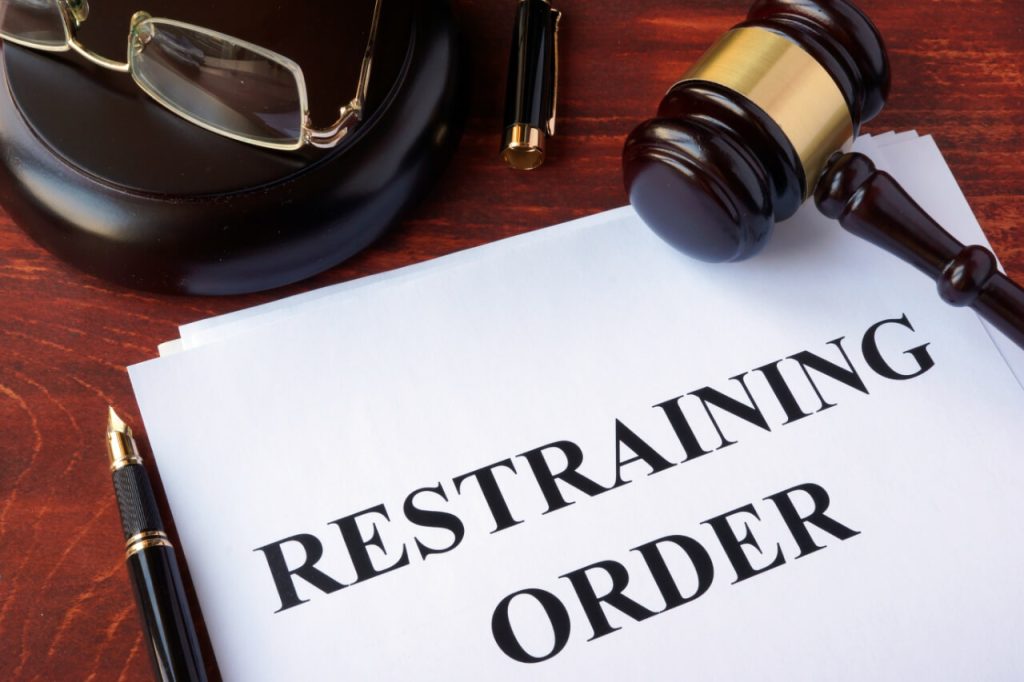Everything You Need to Know About Hawaii Temporary Restraining Order

A temporary restraining order (TRO) is a court order that imposes restrictions on the person who is the subject of the order. It is also called an emergency protective order or an ex parte protective order.
The person may be ordered to stay away from a specific location or from contact with a specific individual. In addition, the order may also include other restrictions, such as staying away from firearms and alcoholic beverages. The requirements may differ from state to state. How does it work in Hawaii?
What Are Restraining Orders and How Do They Work in Hawaii?
Just like in other states, a temporary restraining order in Hawaii is an order of the court that requires someone to stop an action or behavior. It’s not uncommon for the court to issue this type of order for protection from physical abuse, violence, or other acts of abuse of the protected party.
This order enjoins the person or respondent to restrain from performing one or a few of these acts combined:
- Contacting, threatening, or physically abusing the person seeking the order;
- Physically abusing, contacting, or threatening any person who resides at the residence of the protected party; or
- Visiting or entering the residence of the protected party.
Let’s assume the judge thinks that you need protection. If so, the temporary restraining order will turn into an order for protection or injunction against harassment.
How long does it last? Three years on average. Oftentimes, it requires a period of separation. Once the TRO comes into effect, you will be able to ask for specific terms in family court.
How to Get a Temporary Restraining Order (TRO) in Hawaii?
To get an order for protection in Hawaii, you need to go through these six steps:
- Call the branch of the family court or the local office right after the abuse happens. They’ll assist you in getting a TRO and filling out your petition besides scheduling an appointment. So be ready to provide information on the abuse, which may include everything from property damage and verbal threats to psychological and physical abuse.
- Upon arrival at your appointment, you will need to fill out a petition with the help of your attorney. This is necessary to request a TRO. Make sure your petition is written using descriptive language. Describe the violence in detail, using words such as choking, grabbing, hitting, and the like. Be honest. It must fit your specific situation indeed.
- Go to family court and bring the petition with you. After checking your request, a judge will decide on whether or not you should get an order for protection. Before the TRO is granted by the judge, you may be questioned about your request.
- Pick up TRO copies. If the order is granted, you’ll receive 2 copies of the order from the court clerk. One copy is certified, stamped, and sealed (it is intended to serve the abuser), while the other one is for you. Check your order to see if the details are correct. If anything is missing or wrong, ask the clerk to correct it before leaving the courthouse.
- Then the abuser will be “served” by police. He/she will get a copy of the petition as well as papers about the TRO and OSC hearing date. Don’t serve him/her yourself.
- Lastly, an OSC (order to show cause) hearing date is going to be scheduled. That will occur within 15 days of receiving your temporary restraining order.
NOTE: Once you have obtained TRO, be sure to file it at the right place. There are two options. The order should be filed through Family Court in case the defendant had or has any dating relationship with the protected party or is a family member. If you haven’t lived together with the defendant and he/she isn’t your blood relative, then file your order through District Court.
What Happens at a TRO Hearing?
You’re probably wondering what will happen at a court hearing after filing a petition. Once the judge has heard the evidence, your TRO will be extended beyond 180 days if needed. Whether a final order of protection will be issued depends on the judge’s decision.
It is in your best interest to show up. Otherwise, your petition for TRO will be dismissed. That’s why you need to check your TRO for the date and time of the hearing.
The same goes for the other party. If the abuser doesn’t appear despite receiving notice, the hearing will be continued without him or her. If he/she doesn’t get notice of the hearing, a new hearing date will be ordered by the judge and a temporary restraining order will be extended.
You can bring an attorney with you at the hearing to represent you and assist you whenever needed. However, getting a lawyer may take time sometimes. If you need some extra time to find an attorney, request a “continuance” from the judge to arrange a new date of hearing.
Who Can Obtain an Order of Protection in Hawaii?
An order for protection can be filed against the persons who have committed abuse against the protected party or his/her minor child(ren). This is particularly true for domestic abuse which involves a family or household member. This person can be:
- Child
- Parent
- Your former or current spouse (Divorce attorney guide)
- A former or current reciprocal beneficiary – you need to have economic, personal, and emotional relationships with that person no matter if you’re prohibited from getting married to him/her legally.
- Somebody related to you by marriage or blood
- Someone who you’ve dated or you’re still dating. (divorce-related questions)
- Somebody with whom you used to live or you still live.
- Those who have a child or children in common.
Related: Questions to ask a divorce lawyer
Who Is Eligible to Serve a TRO in Hawaii?
During the 2nd and 3rd Circuits in Maui, those who seek the temporary restraining order usually contact a professional Process Server. They can choose it from the list of Process Servers. How does it work?
After providing a copy of the TRO to your Process Server, you will be supposed to give him the addresses of the respondent. Once the defendant has been served by the Process Server, you should be informed about that promptly.
Be ready to pay a charge of $25 per complaint served. There’s also a charge of $0.40/mile mileage. You can avoid these fees since the TRO has not to be served by the professional. It can be anyone who turned 18, providing that he or she is not involved in the case.
Conclusion
To sum up, a temporary restraining order (TRO) is a court order that prohibits someone from doing certain things, such as coming near or contacting another person. A court judge issues this legal document to force or prevent any actions during a certain period. TRO serves as a precursor to the preliminary injunction.
Once the order is issued, the status quo will take effect till a preliminary injunction hearing. At a hearing, the person requesting the injunction must show that he or she has a reasonable fear of harm or that there is an imminent danger of violence.
This can be a complicated process and court can be challenging, so it’s best to hire a lawyer to increase your chances of getting a TRO in Hawaii. From filling out a petition to presenting your case in court, your attorney will always be there for you.



